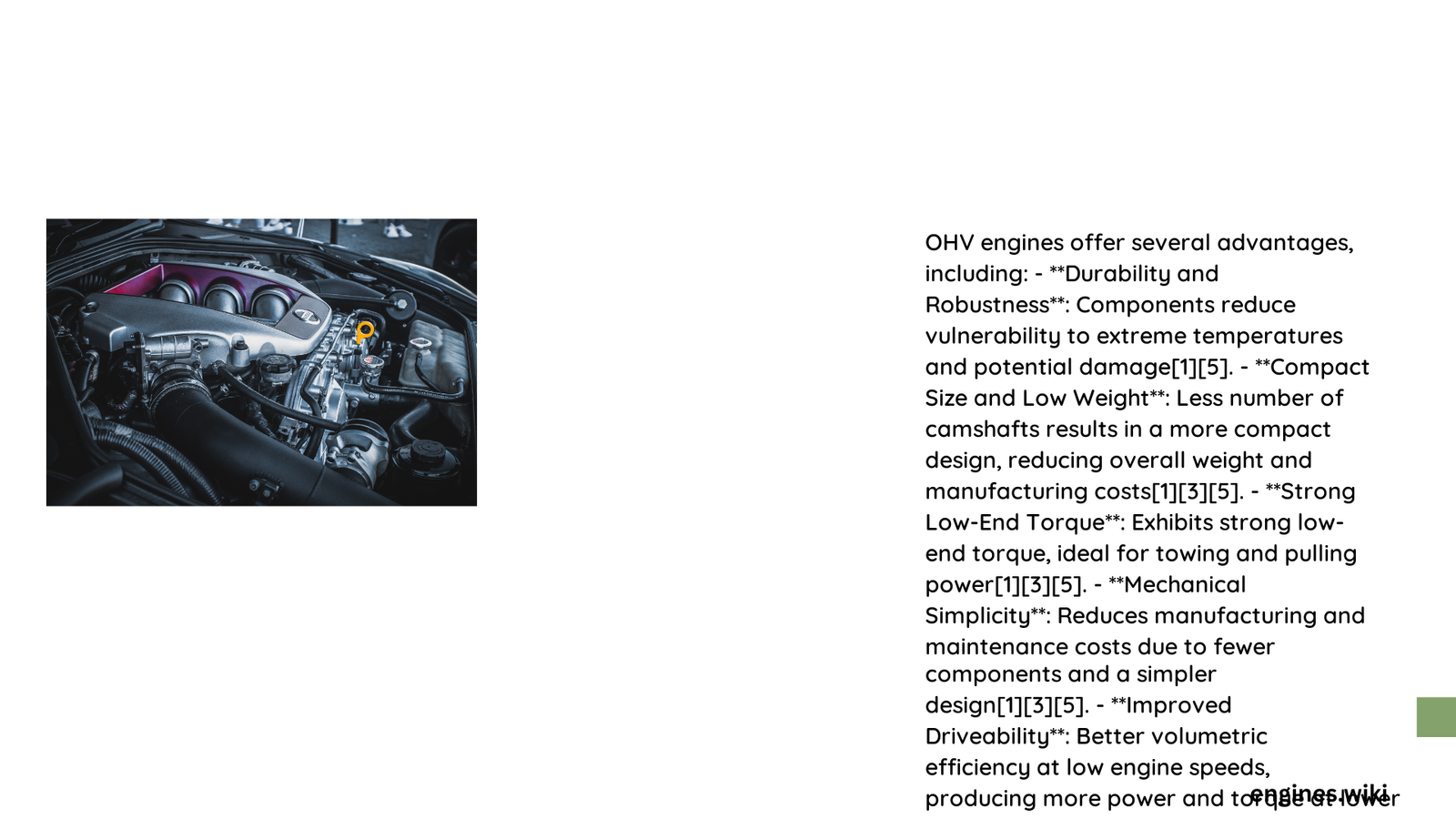Overhead valve (OHV) engines represent a time-tested powerplant technology offering remarkable mechanical advantages across multiple performance domains. These engines excel in delivering robust low-end torque, maintaining mechanical simplicity, and providing cost-effective power generation for diverse automotive and industrial applications. By leveraging a compact pushrod design, OHV engines demonstrate exceptional durability, easier maintenance, and strong performance characteristics that continue to make them attractive for manufacturers and enthusiasts alike.
What Makes OHV Engines Unique?
How Do OHV Engines Deliver Superior Performance?
OHV engines distinguish themselves through several critical performance metrics:
Mechanical Design Advantages
- Compact Valve Configuration: Utilizes pushrod mechanism for valve actuation
- Lower Manufacturing Complexity: Fewer moving parts compared to overhead cam designs
- Robust Construction: Enhanced durability under challenging operational conditions
Performance Characteristics Table
| Performance Metric | OHV Engine Performance | Comparative Advantage |
|---|---|---|
| Low-End Torque | Exceptional | High Acceleration |
| Manufacturing Cost | Lower | Economic Efficiency |
| Maintenance Complexity | Simplified | Reduced Service Intervals |
| Mechanical Reliability | High | Long-Term Durability |
Why Do OHV Engines Provide Better Low-End Power?
The fundamental design of OHV engines contributes significantly to their low-end power generation:
- Direct Valve Actuation: Pushrod mechanism enables immediate power transfer
- Reduced Valve Train Friction: Minimizes energy losses during power transmission
- Optimized Combustion Chamber: Allows more efficient air-fuel mixture management
What Are the Maintenance Benefits of OHV Engines?
OHV engines offer substantial maintenance advantages:
- Simplified Valve Adjustment: Easier mechanical access
- Reduced Component Count: Fewer parts mean lower replacement costs
- Straightforward Diagnostic Procedures: Simplified troubleshooting process
How Do OHV Engines Compare in Fuel Efficiency?
While not the most fuel-efficient design, OHV engines provide balanced performance:
- Consistent Power Delivery: Strong performance across lower RPM ranges
- Predictable Fuel Consumption: More stable fuel management
- Adaptability: Suitable for various vehicle types and applications
Can OHV Engines Meet Modern Emission Standards?
Modern OHV engines have evolved to address emission challenges:
- Advanced Combustion Technologies: Improved fuel injection systems
- Catalytic Converter Integration: Enhanced exhaust treatment
- Electronic Engine Management: Precise fuel-air mixture control
Technical Considerations for OHV Engine Selection

Factors Influencing OHV Engine Performance
- Vehicle weight requirements
- Intended operational environment
- Specific power and torque needs
- Budget constraints for manufacturing and maintenance
Practical Applications
OHV engines remain prevalent in:
– Pickup trucks
– Heavy machinery
– Agricultural equipment
– Classic automotive restoration
– Performance vehicle modifications
Future of OHV Engine Technology
While facing competition from more advanced designs, OHV engines continue evolving through:
– Lightweight materials
– Advanced computational modeling
– Integrated electronic management systems
– Hybrid technological adaptations
Conclusion
OHV engines represent a pragmatic balance between mechanical simplicity, performance, and cost-effectiveness. Their continued relevance stems from robust design principles and adaptability across diverse applications.
